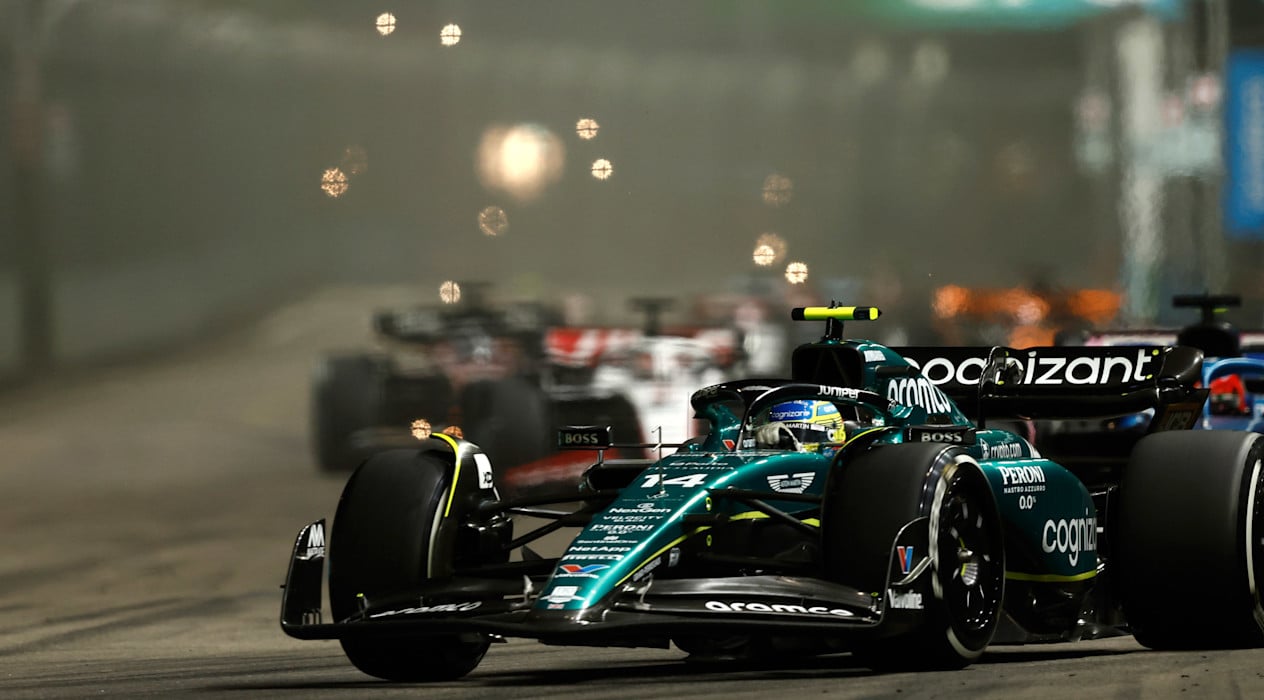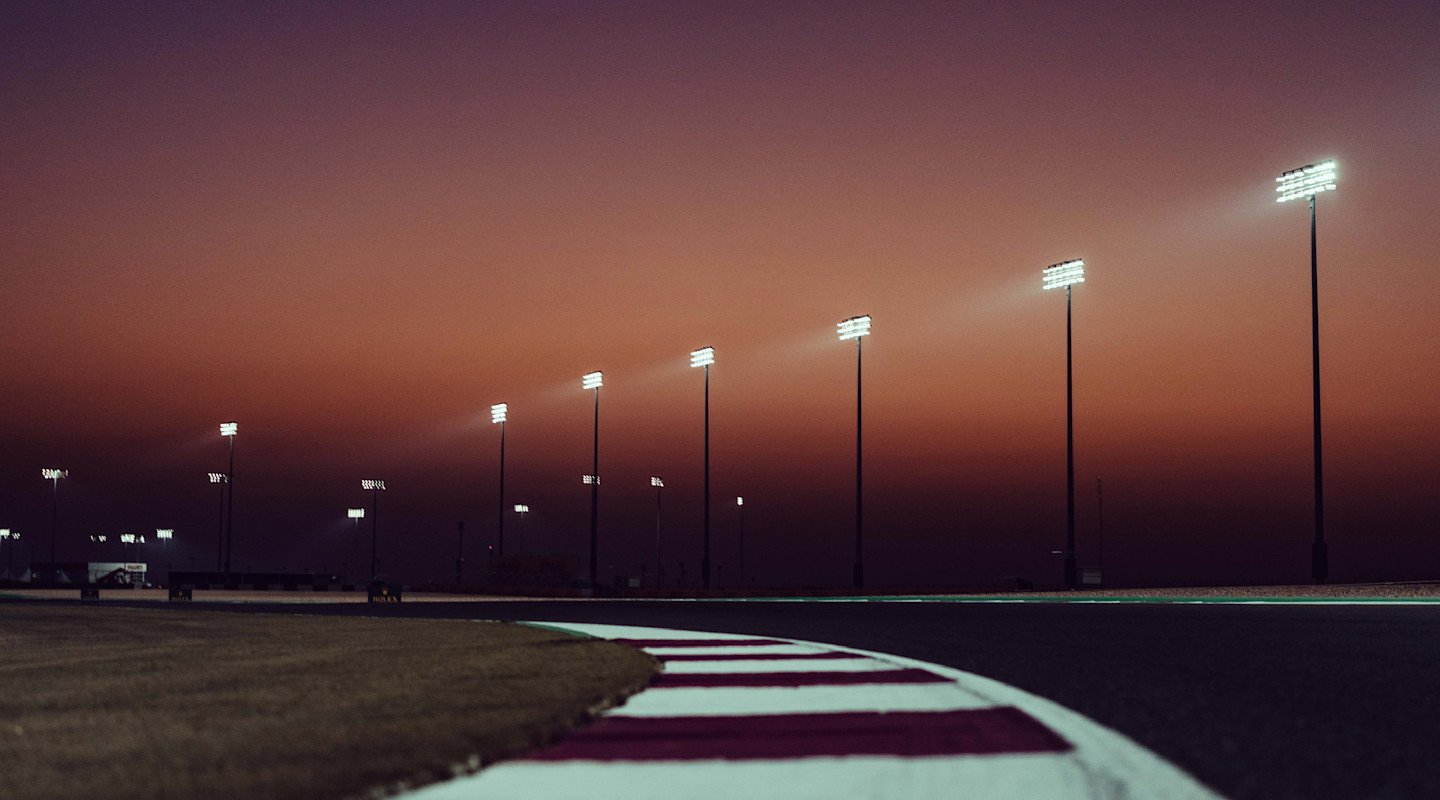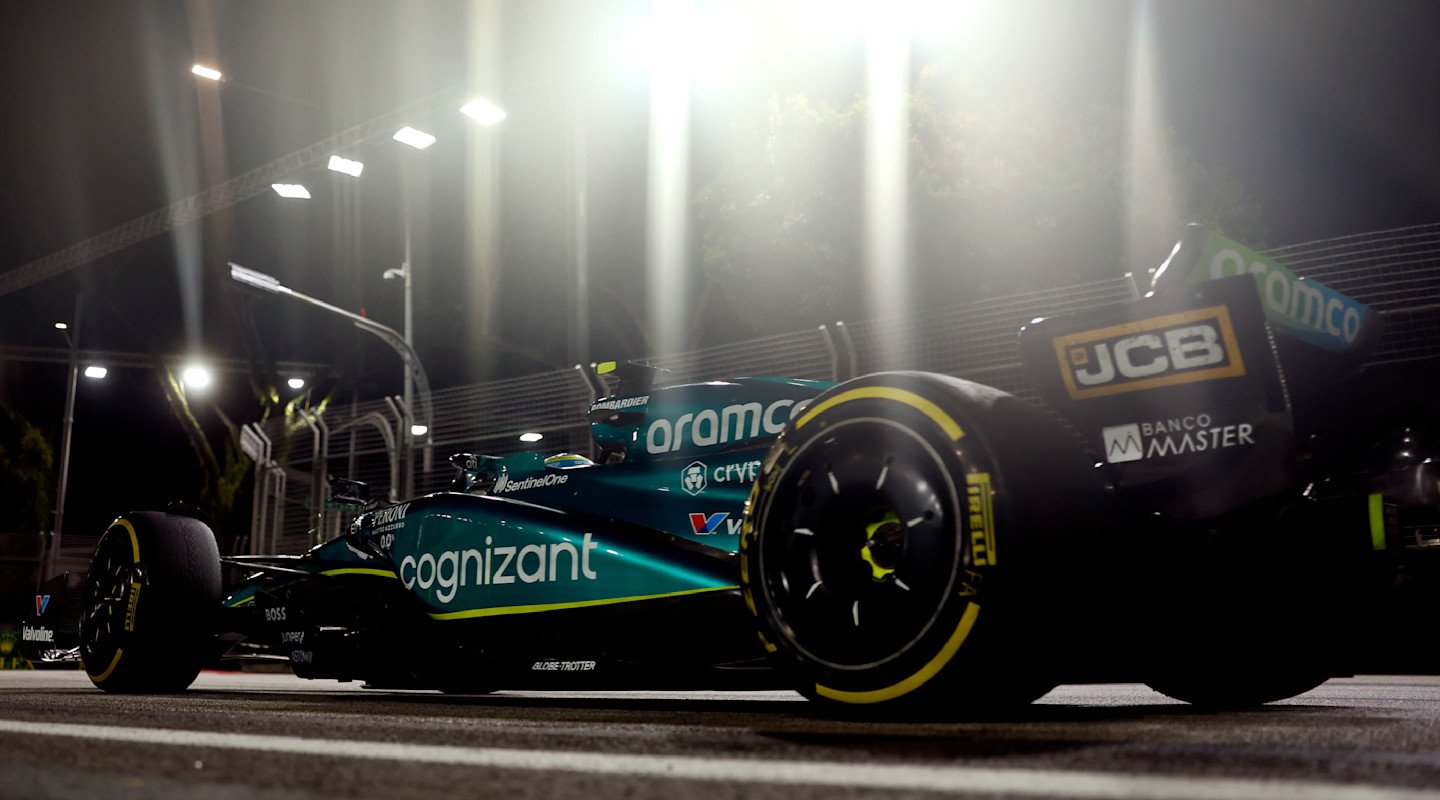
As we prepare to race under the lights in the Qatari desert, we team up with our Official Trading Partner AvaTrade to reveal what it takes for a Grand Prix to take place at night.
Night racing adds a captivating dimension to Formula One. The beams from towering floodlights make for an exciting spectacle while the play of light and shadows provides another challenge for drivers. Together with our Official Trading Partner AvaTrade, we shine a light on how circuits gear up for night racing.
Singapore hosted the first F1 night race in 2008 and since then F1 has added a handful of additional floodlit contests to the calendar, including the Abu Dhabi, Saudi Arabian and Qatar Grands Prix. The latter pair both joined the roster in 2021, and this year sees another night race join the calendar, the Las Vegas Grand Prix on 17-19 November, taking the tally of night races to six for the season.

Under the lights
Qatar did not appear on the calendar last season due to the 2022 FIFA World Cup but it returns this weekend at the Lusail International Circuit, which added permanent floodlights in 2007 to host races in the evening, where temperatures are cooler. The 3,600 bulbs were replaced by more energy-efficient LEDs in 2021.
Lighting is central to making circuits fit for night racing in Formula One. The Sporting Regulations and Technical Regulations remain unchanged for night races – but the FIA does set out how night races should be lit in a special set of guidelines.
The guidelines detail how electrical equipment should be positioned away from fans and staff and located where 'they cannot come into direct contact with an out-of-control vehicle, or debris caused by an accident'.
Furthermore, the FIA recommends that lighting elements must be able to 'withstand exposure to race fuel, fire suppression, and cleaning chemicals with no reduction in the safety of the equipment'.

Seeing clearly
To ensure that race control cameras, medical staff, and television broadcasters can capture images consistently and accurately, the FIA uses a metric called CRI – Colour Rendering Index – which quantifies the ability of electric light sources to reveal the colours of objects compared to a natural light source. Circuits should have a CRI of above 90 on a scale of 0-100.
Colour temperature is also crucial to ensure the lighting satisfies the FIA's objectives for safety and comfort. The FIA uses CCT – Correlated Colour Temperature – to quantify this, with a scale measured in Kelvins. At the lowest end of the scale, around 1,000K, a lamp would emulate the red flame of a match. As the scale increases, the light gets bluer. The FIA aims to have a colour temperature of 6,000K for night races – emulating daylight.
Illuminance is also crucial, to ensure that the track surface itself has a clear distinction from run-off areas and other areas of the circuit. The FIA uses Lux units to recommend how illuminated certain areas are: the track should be at 1,500 Lux while run-off areas should be illuminated at around 1,000 Lux. This helps high-definition TV cameras to capture, and drivers to see, the circuit clearly.

To reduce 'disability glare' – light scatter that can prove dangerous given the eye takes time to adapt to different light sources – the FIA also recommends that light in the driver’s field of view is consistent and unaffected by surfaces that can cause glare.
Shadows on the track also need to be minimised to help ensure drivers can see the apex of a corner clearly, along with their rivals and any other hazards. The FIA recommends that the lighting system should not cast solid shadows to ensure drivers know exactly where they're pointing the car, what they're aiming at – and what they're avoiding.
Spectacular lighting doesn't just make for stunning shots of the AMR23 blazing by, its floor emitting sparks of orange and yellow; lighting is carefully calibrated to ensure drivers can safely see after the sun has set and television cameras can still capture all the on-track action.
Learn more with AvaTrade
In the same way that a racing driver can constantly learn and improve using data, AvaTrade encourages traders to hone and refine their own skills – courses are created by experts, free to access, tightly focused and comprehensive.
You can discover more about our partnership with AvaTrade and access a suite of free educational resources designed to help you enhance your trading skills.

AVATRADE EXPLAINS THE F1 RULEBOOK
I / AM membership
The ultimate fan experience.
Get closer to the team with unparalleled access, behind-the-scenes insights and once-in-a-lifetime experiences, and enjoy exclusive competitions, rewards, offers and more.









































